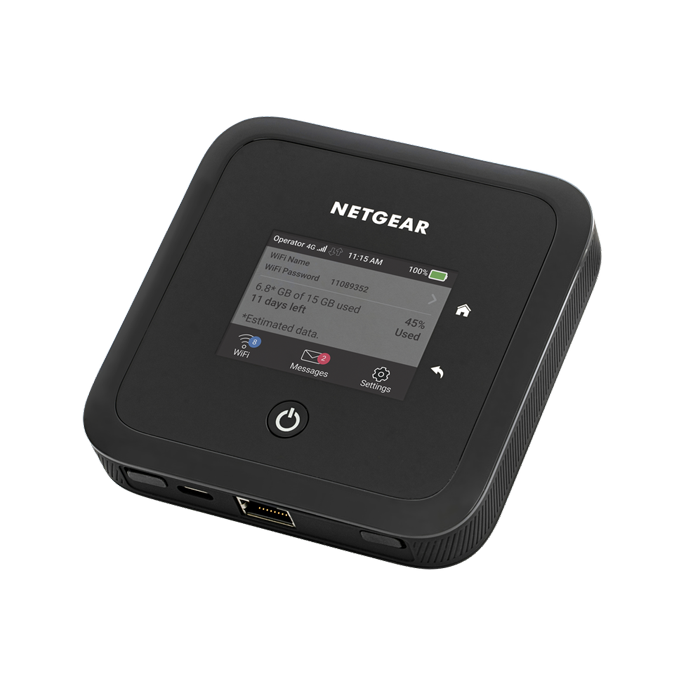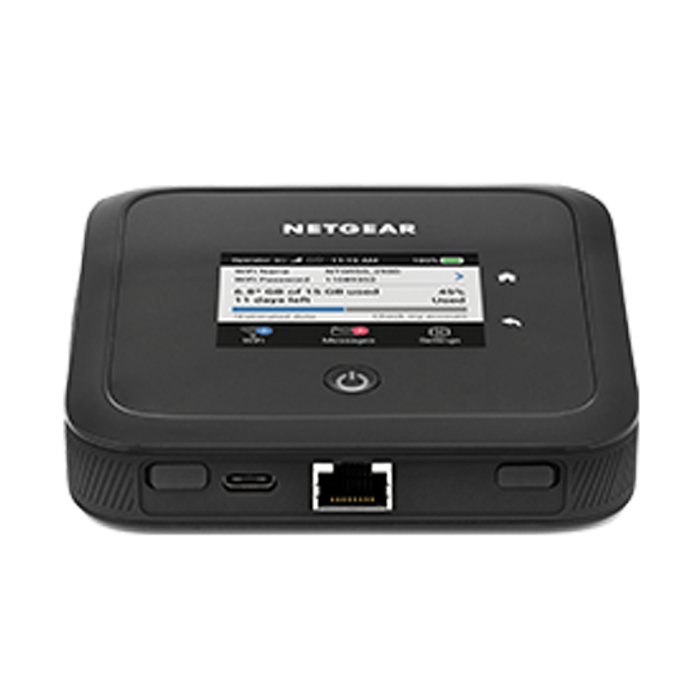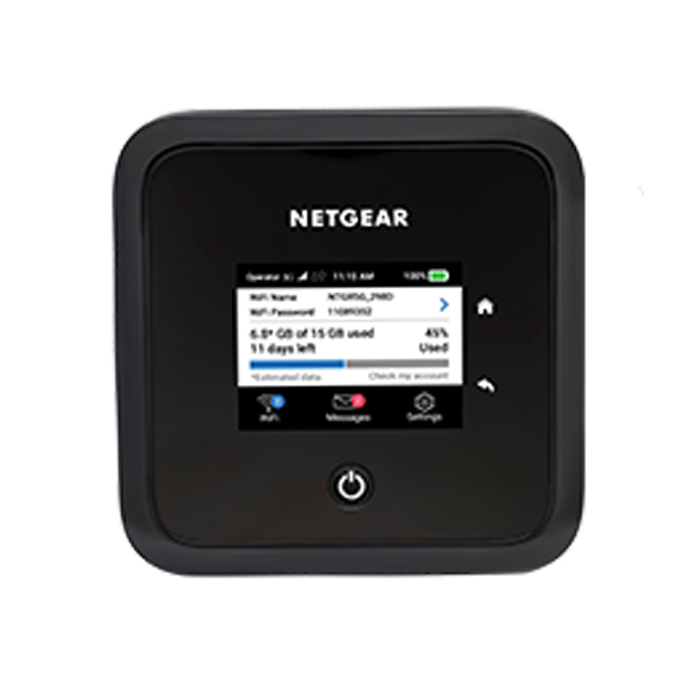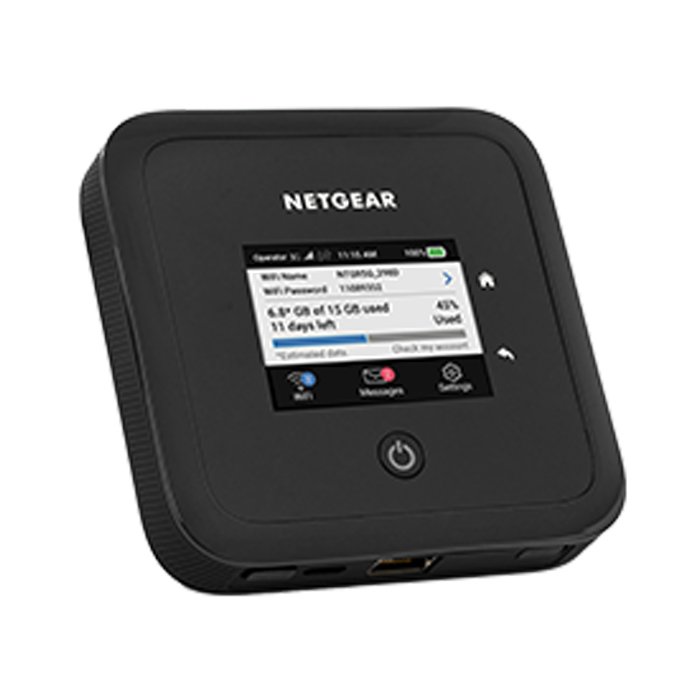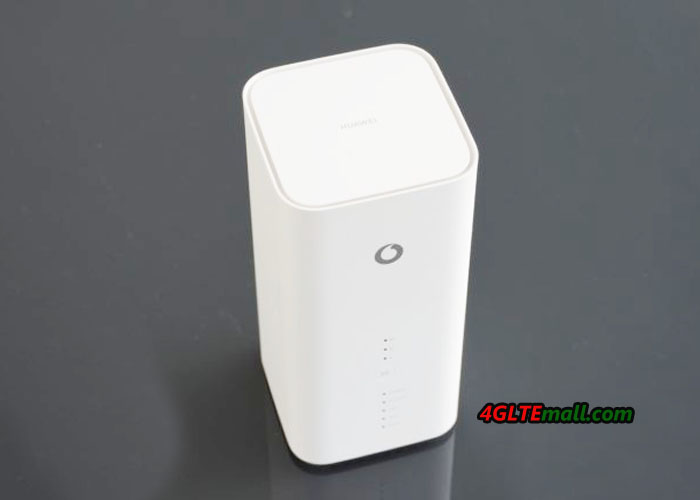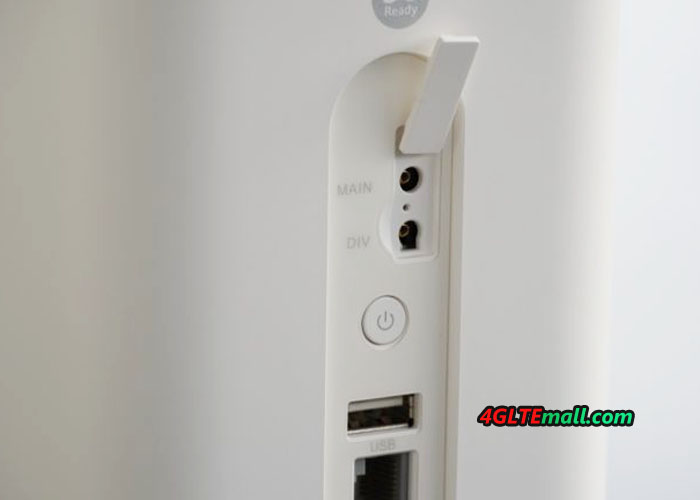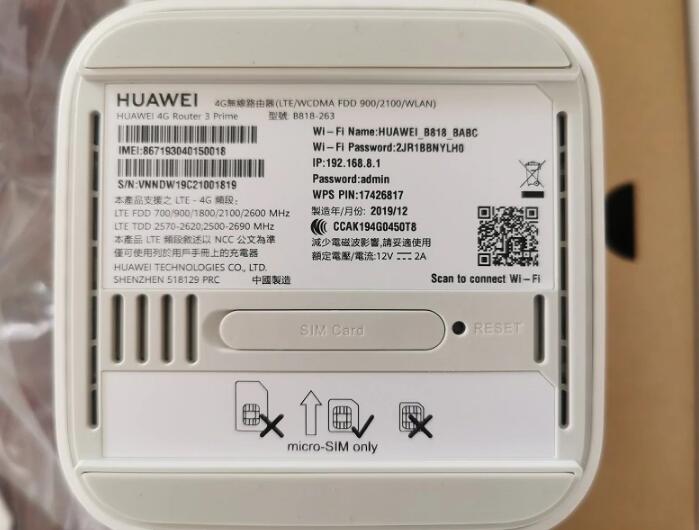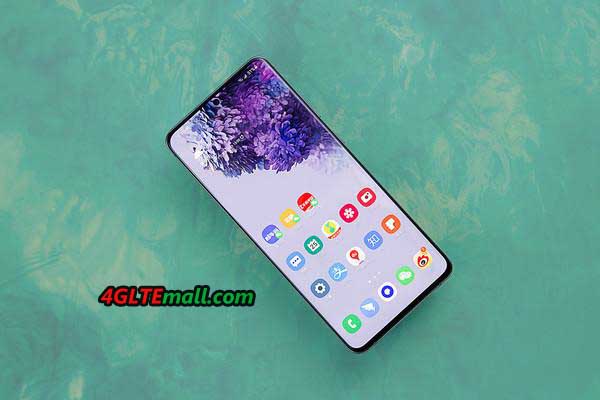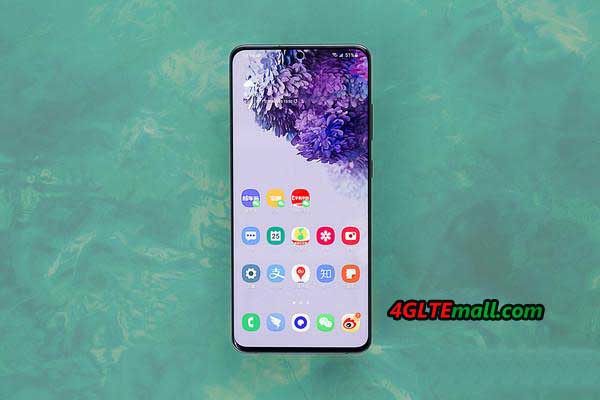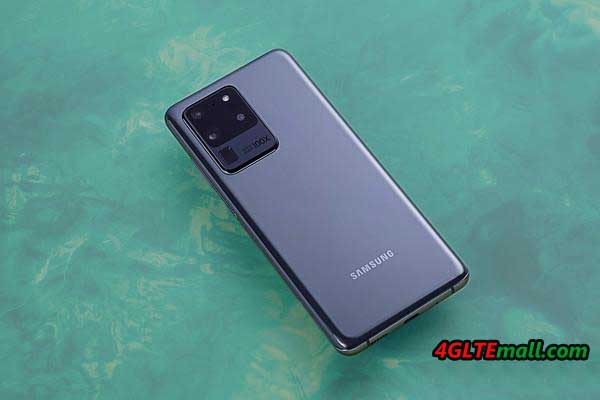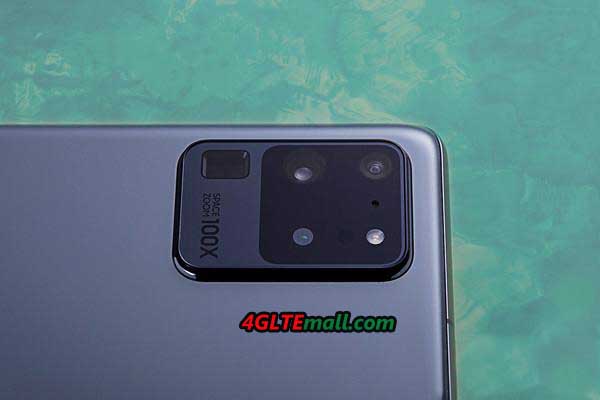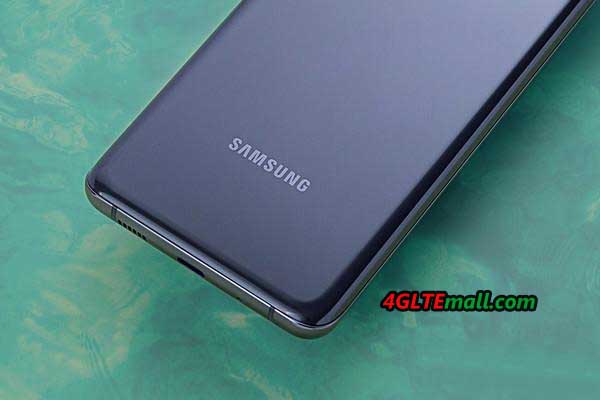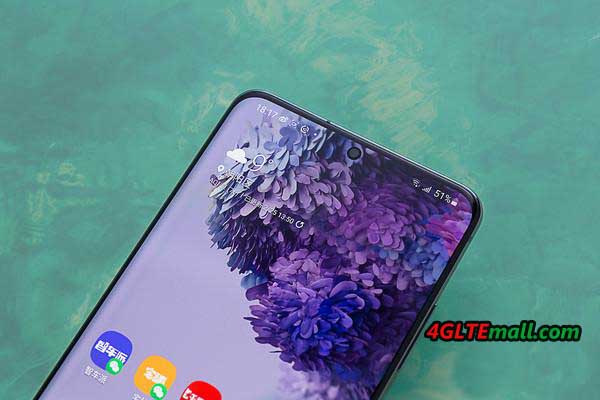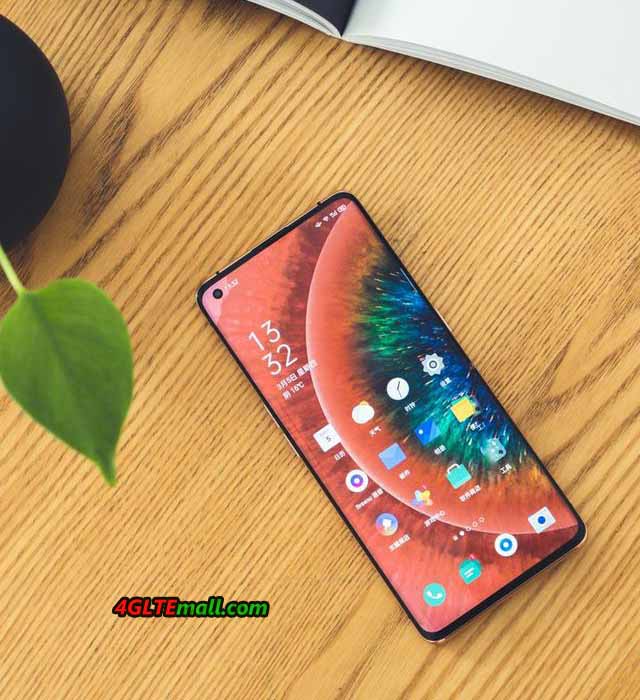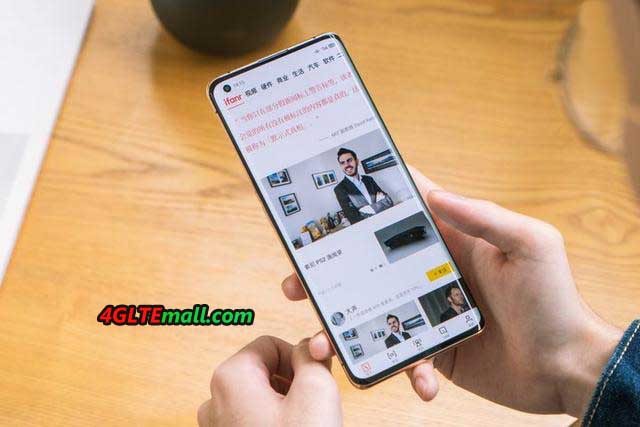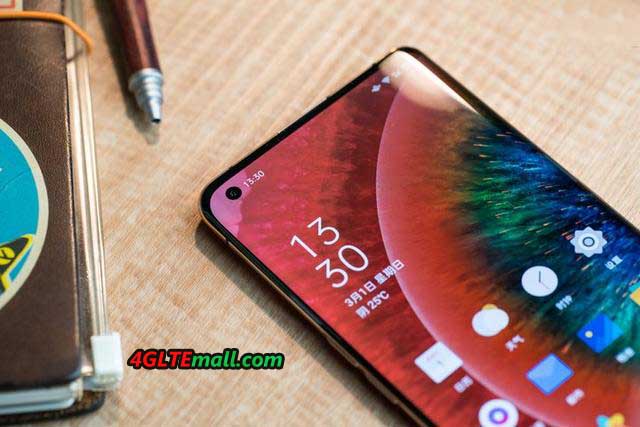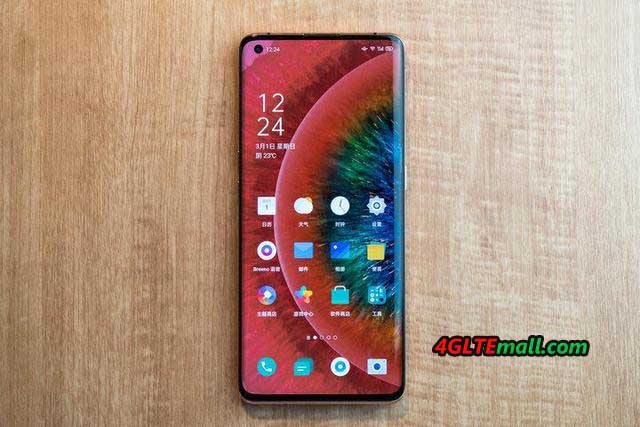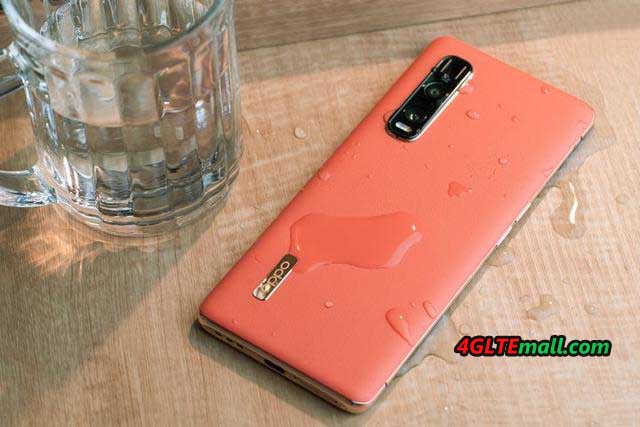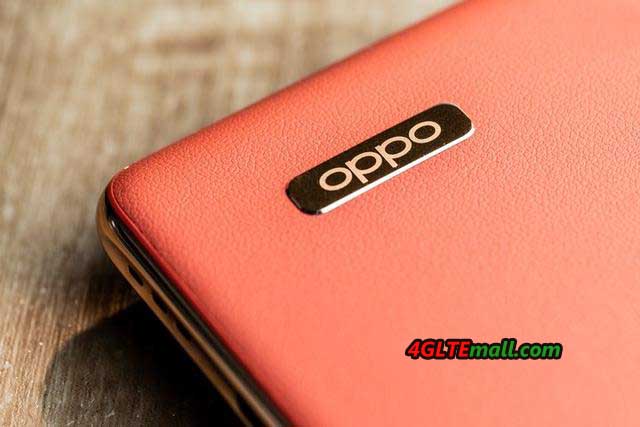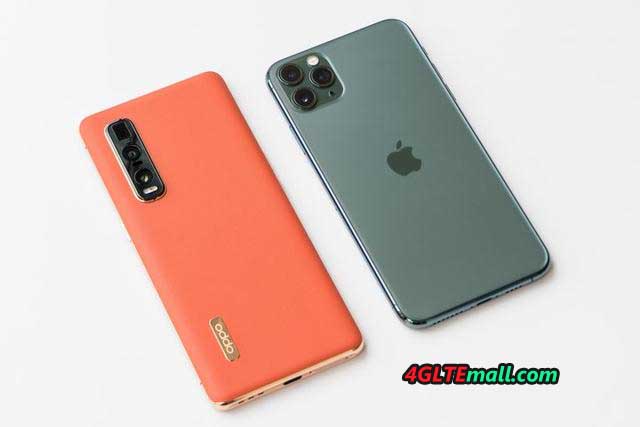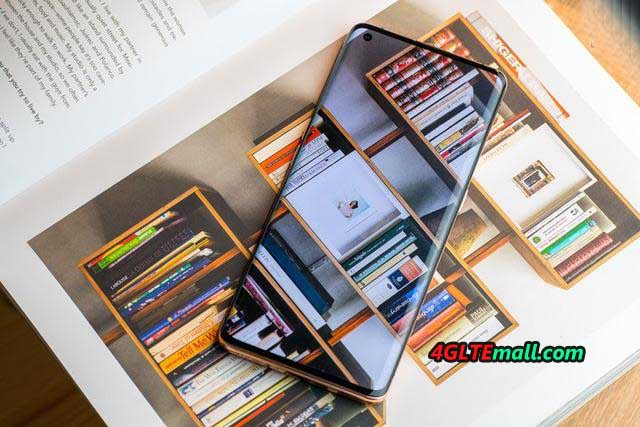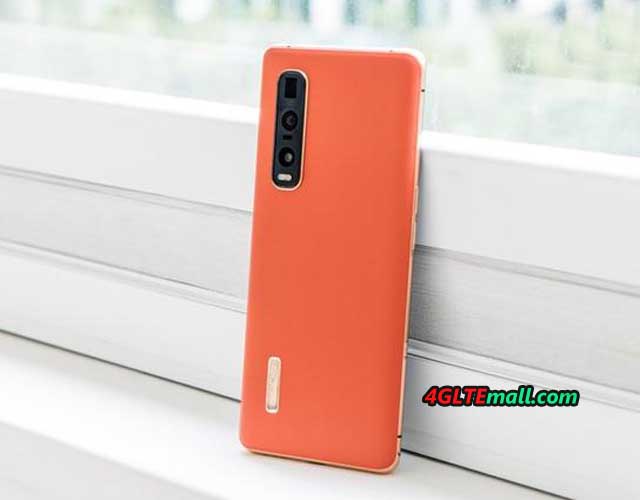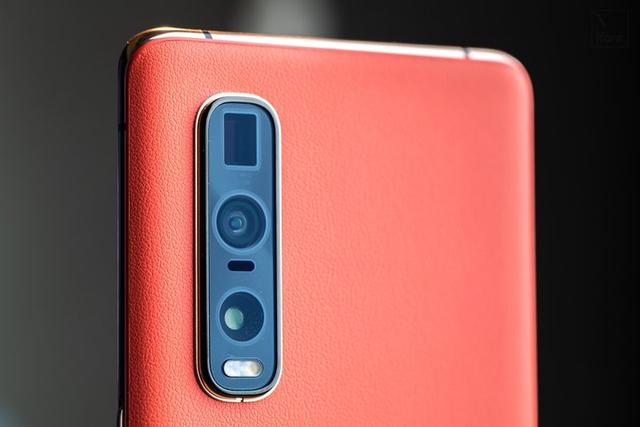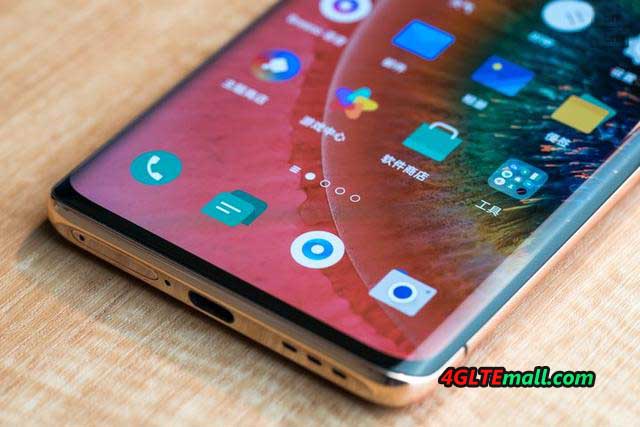-
[PR]
×
[PR]上記の広告は3ヶ月以上新規記事投稿のないブログに表示されています。新しい記事を書く事で広告が消えます。
-
Netgear Nighthawk M5 MR5200 5G Mobile Hotspot Review
Netgear Nighthawk M5 MR5200 is a new 5G flagship mobile pocket WiFi router which was announced at the January 2020 CES trade show. As the successor to the 4G mobile router Netgear Nighthawk MR1100, Netgear Nighthawk MR5200 looks similar to the Nighthawk M1, but it has much difference and the specs configuration has much improvement. The Nighthawk MR5200 is likely destined to be AT&T's 5G mobile hotspot, but it’s not the first one. The first one is the Netgear Nighthawk M5 Fusion MR5000.
Netgear Nighthawk M5 MR5200 Appearance
Like the Nighthawk MR5000, the Netgear 5G Router features a touch screen interface, gigabit ethernet port, USB-C for charging and tethering, and it appears to have antenna ports as well. From the 2.4" color LCD touch screen, users can conveniently monitor data usage, see WiFi name/password, mobile signal strength, and manage device and network settings. Time, date, data usage and important status information are displayed on the lock screen.
Netgear Nighthawk M5 MR5200 Specifications
Netgear Nighthawk M5 MR5200 is based on the Qualcomm Snapdragon X55, a second generation 5G modem chipset, supporting all versions of 5G, including both millimeter-wave and sub-6 networks, it also supports Wi-Fi 6 for devices that are connected to it.
Simply connect your Nighthawk M5 Mobile Router to your existing home router to deliver 5G speeds throughout your home. The router supports the latest 5G Technology: 5GNR Sub 6 GHz (NSA). It also supports LTE CAT.22, LTE Advanced, 4x4 MIMO, 256QAM.
The Qualcomm Snapdragon X55 will also support dynamic spectrum sharing - allowing 4G and 5G technologies to co-exists on the same frequency bands, allowing for a faster rollout of 5G coverage nationwide. And when there is no 5G coverage to be found - the M5 will support the latest Cat-22 LTE technology, theoretically capable of well over gigabit speeds in fully developed LTE areas. The M5 also has other benefits of 5G, including up to 10x lower latency compared with 4G, and much better spectrum efficiency.
Netgear is claiming the 5G mobile router will have enough horsepower to enable peak theoretical 5G downlink speeds of "Close to 4Gbps" - though it will undoubtedly take a long time for cellular networks to evolve to support this level of performance.
Netgear Nighthawk MR5200 WiFi 6 Technology
The other exciting new feature included in the Nighthawk M5 is support for Wi-Fi 6, the next evolution of the Wi-Fi standard more technically known as 802.11ax. Wi-Fi 6 hotspots and routers will remain backwards compatible with Wi-Fi 5 and Wi-Fi 4 clients too - and the Nighthawk M5 supports simultaneous use of both 2.4GHz and 5GHz Wi-Fi spectrum with as many as 32 client devices connected at once. With increased capacity, you get faster speeds for high-end video streaming on your smartphones, tablets, and computers.
Netgear Nighthawk MR5200 Battery
For the power source, the M5 uses a USB-C port for charging and a removable rechargeable battery. Netgear says the mobile router has a long battery life, but can also work when plugged in, with the battery removed. The Netgear Nighthawk M5 mobile router features a long lasting battery for all day usage. You also have the option of plugging into a power outlet at home for a 24/7 operation with battery removed.
Netgear Nighthawk MR5200 Price and Availability
The Nighthawk M5 5G WiFi 6 Mobile Router is available in the second half of this year. The price of M5 MR5200 is not yet known but once it’s available, we will update it.
PR -
Huawei 4G Router 3 Prime B818 Review
Huawei B818 was introduced two years ago but recently, Huawei supplied this new 4G wireless router to the market and some network providers. Huawei B818 4G router Prime has two variant models now: Huawei B818-260 and B818-263. The Huawei B818-263 is also named Huawei 4G Router 3 Prime.
The Huawei B818 is a 5G ready router (LTE Cat. 19). The Huawei 4G WiFi router is unlocked - works without any problems with any network with a maximum download speed of up to 1600 Mbit/s, and sending up to 150 Mbit/s. The router has many languages available for web interface settings and is easy to use. The full package content includes: Huawei B818 router, power supply, RJ-45 cable, user manual, warranty card and white box.
Huawei B818 is a stationary router that can support up to 64 devices (32 on 2.4 and 5.0 GHz). It has a built-in Ethernet socket; you can connect two external antennas (3G and LTE) to it. You can conveniently manage the router using the HiLink application (available on Android and iOS platforms). The Huawei B818 router has a WPS button that makes it easy to pair devices with the router. Huawei B818 is the successor to the well-known Huawei B618s.
The main Specifications of the Huawei 4G Router 3 Prime:
- SIM unlocked for global use
- Download speed up to 1600 Mbit/s (LTE category 19)
- WiFi 802.11 a/b/g/n/ac, dual 2.4 GHz and 5 GHz wireless network
- Support up to 64 connected devices
- Support for every network in Poland (and Europe)
- 2 x LAN 10/100/1000 Mbit/s
- 1 x WAN 10/100/1000 Mbit/s
- LTE download speed up to 150 Mbit/s
- Management option via the Huawei HiLink application
Huawei B818-263 Applications:
- Huawei 4G Router 3 Prime is a very fast LTE cat. 19 router. It can support up to 64 users at the same time, so it's perfect for both home and office. Thanks to 4x4 MIMO technology that increases the throughput of your local network several times, you will get a fantastic speed of up to 1.6 Gbit/s. The device is equipped with 4 internal antennas that extend the data transmission range by 40% and guarantee you a strong and stable signal also in large, multi-level rooms.
- Huawei 4G Router 3 Prime is very easy to use thanks to the Huawei application. It will help you find the best location for the router, and will also allow you to independently manage network traffic, parental control, network protection or guest accounts. What's more, the router will provide you with several levels of security: encryption, network security against unauthorized persons and quick logout of unauthorized users.
Smooth operation
- HUAWEI B818 gives you uninterrupted Internet access thanks to the combination of a mobile network and an Ethernet connection. Get access to fast internet using Wi-Fi or a network cable. You can also create your own local network.
Powerful antenna
- The unique HUAWEI B818 antenna provides high performance and helps in full coverage in many directions. And if the signal is too weak in your location, you can amplify it by adding two 3G/4G LTE external antennas. We recommend this outdoor antenna for Huawei B818 router: http://www.4gltemall.com/4g-lte-outdoor-antenna-2-x-ts-9-connectors.html
Support up to 64 users
- HUAWEI B818 sensationally meets the needs of small and medium-sized enterprises supporting use by up to 64 people via a Wi-Fi connection.
Here is the general Specification of Huawei 4G Router 3 Prime B818:
Supported bands: LTE Cat19 / HSPA+ / HSDPA / HSUPA / HSDPA / HSPA / UMTS / WCDMA / EDGE / GSM
Data download: up to 1600 Mbps
Data upload: up to 150 Mbps
Connectors:
- SIM card slot
- 2 LAN (RJ45) inputs,
- WAN / LAN port (RJ45),
- Entry to the telephone port (RJ11),
- Two switches on the external antenna.
WLAN: WiFi 802.11 a / b / g / n / ac 2.4 GHz and 5 GHz
LED diodes:
- Cellular network signal strength indicators,
- Power indicator
- Status indicator
- LAN indicator
- Wi-Fi indicator
- Mode indicator.
Functions:
- Administrative website, full router management using a web browser from a computer or mobile device (also using the Huawei HiLink App mobile application),
- 2 SSID,
- WPS
- Limit on the number of Wi-Fi devices (up to 64),
- Choice of Wi-Fi channel width and number,
- SMS support,
- DHCP
- Remembering the SIM card PIN,
- Counter and data limit
- List of blocked Wi-Fi devices,
- Login Manager.
Dimensions: 102 x 103 x 225 mm
Weight: 620 g
-
Huawei B818 VS Huawei B618
Huawei B818 WiFi router was introduced for a long time but was recently available in the market. Perhaps because the 5G network development is delayed in many countries, the LTE advanced Pro network is still the main development trend. As the top equipment supplier, Huawei presented the Huawei B818 4G Router two years ago but until recently, the Huawei B818 is available to buy. The processor Huawei B618 was the best seller of 4G Wireless Routers in past years. The two Huawei 4G Wireless Routers looks similar, many customers want to know what the difference is between the Huawei B818 and B618 router. Today we will have a check the comparison of the two routers.
Huawei B818 VS Huawei B618 Specifications and Features
Model Huawei B818 Huawei B618 Product type LTE WiFi Router LTE WiFi Router Category LTE Cat.19 LTE Cat.9/ Cat.11 Chipset HiSilicon Balong V7R65 HiSilicon Balong 750 LTE Data rates DL 1.6Gbps/UL 150Mbps DL 600Mbps/UL 100Mbps Supported 4G LTE frequency bands Huawei B818-260: Band 1/3/7/8/20/28/32/38/42
Huawei B818-263: 1/3/5/7/8/20/26/28/32/38/40/41/42/43B618s-22d: Band 1/3/7/8/20/38
B618s-65d: 1/3/5/7/8/28/40WLAN 802.11a/b/g/n/ac, dual-band 2.4GHz & 5GHz 802.11a/b/g/n/ac, dual-band 2.4GHz & 5GHz Max supported users 64 users 64 users MIMO 8 X 8 MIMO 4 X 4 MIMO Antenna Two, TS-9 jacks Two, TS-9 jacks Buy Antenna Huawei B818 External Antenna Huawei B618 Antenna App management Huawei Hilink APP Huawei Hilink APP SIM Size Micro SIM Micro SIM Battery NO NO Dimensions 103 x 103 x 225mm 95 × 95 × 208mm Interfaces * 1 x LAN port(45)
* 1 x LAN/WAN port (45)
* 1 x telephone port(RJ11)
* 1 x USB 2.0 port
* 2 x external LTE antenna ports* 1 x LAN port(45)
* 1 x LAN/WAN port (45)
* 1 x telephone port(RJ11)
* 1 x USB 2.0 port
* 2 x external LTE antenna portsDatasheet Huawei B818 Datasheet Huawei B618 Datasheet User Manual Huawei B818 User Manual Huawei B618 User Manual Other features DHCP Server, DNS RELAY and NAT, VoLTE, IPv4 /IPv6 dual stack DHCP Server, DNS RELAY and NAT, VoLTE, IPv4 /IPv6 dual stack Firmware download Huawei B818 firmware Huawei B618 firmware Driver Huawei B818 driver Huawei B618 driver Reviews Huawei B818 Review Huawei B618s-22d Review Price/USD 499.00USD 449.00USD From the table, we can see the upgrade model Huawei B818 supports fast LTE download speeds and it supports more LTE frequency bands. Other features are very similar on the two Huawei LTE routers. The body of Huawei B818 is larger than Huawei B618 router. Of course the latest Huawei B818 price is higher than Huawei B618 price.
-
Samsung Galaxy S20 Ultra 5G Phone Test
Samsung Galaxy S20 Ultra was already available for a short time with the brother model Samsung Galaxy S20 and Galaxy S20 Plus. We had used this phone for one month and then provided this test report. First, let’s have a review of the Galaxy S20 Ultra specifications
Samsung Galaxy S20 Ultra Specifications:
- Manufacturer:Samsung
- Model name:Galaxy S20 Ultra
- Price:from 1349 euros
- Available:March 13, 2020
- Size:9 x 76 x 8.8 mm
- Weight including battery:220 g
- Operating system:Android 10
- Battery:5000 mAh
- Display:9 ″ OLED display (QHD +, 120 Hz)
- Camera:Quad camera (108 + 48 + 12 MP + ToF)
- Storage:128 GB
- CPU:Exynos 990
- RAM:12 GB
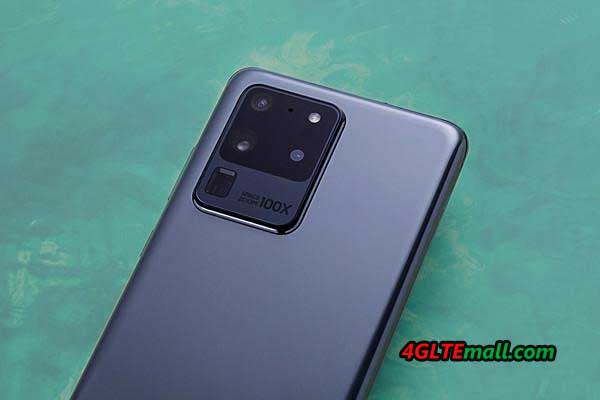
Samsung Galaxy S20 Ultra Display
The display is the highlight with this model, because the OLED panel is not only of good quality, bright and has great viewing angles, it is also very fluid thanks to 120 Hz. For many latest phones, 90+Hz is the standard configuration and Samsung 5G phones are at the top. 120 Hz can currently only be used with FHD+, if you want QHD+, you have to live with 60 Hz. However, we hardly see a difference between FHD and QHD and therefore mostly used FHD+ with 120 Hz. However, an update will soon enable QHD+ with 120 Hz, only as a side note.
The display is now less bent on the sides. A small hole in the top middle is our preferred type on a display. The disadvantage is that only one camera fits in there and you cannot install a 3D sensor, but we even wonder why the hole in the Galaxy S10 was on the right.
Samsung Galaxy S20 Ultra Design
The S20 Ultra model would have looked good, and the Galaxy S20 and S20 plus better, especially with the colors. The camera hump is extremely large and ventures very far out of the body, which is definitely not a nice element. On this point, the models like a Huawei Mate 30 Pro or Apple iPhone 11 Pro look a bit more elegant The edges of the hump are also somewhat "sharp".
The Samsung Galaxy S20 Ultra is not ugly, especially the front looks modern, but the back can't keep up.
Another thing is the size due to the 6.9 inch display and the weight of over 200 grams, which would be far too big. It's just a shame that the large Ultra model has in some cases significantly better configuration than the S20 models.
Samsung Galaxy S20 Ultra Camera
The highlight of the 5G cell phone in marketing is the camera with 108 megapixels. The number is irrelevant these days, but the camera is really a highlight.
The photos are extremely sharp and even with 10x or even 20x zoom you get acceptable results. The 100x zoom is a pure gimmick that you try out and then never use again because the photos look too washed out. When it comes to night shots, the S20 Ultra can't quite keep up with Huawei, Apple and Google, but it does very well. In bad light, the images are a bit noisier than those of competing models, but they are not bad.
Basically, we was very satisfied with the camera in the test, it is fast, takes good and sharp photos, shows its strength when zooming, the large sensor lets in a lot of light.
The front camera also takes very good pictures and video recordings are acceptable. Not as good as Apple, but close to it in good light and better than, for example, Huawei P40.
Samsung Galaxy S20 Ultra Battery
If you use the Samsung Galaxy S20 Ultra with the 5000 mAh battery with a medium display brightness and 60 Hz, you can get by very long. But even with a higher brightness of over 80 percent and 120 Hz, the battery life is still acceptable.
Sometimes there was almost 20 percent less battery in the S20 Ultra overnight. Sometimes in the morning it was just on the table in the WLAN and you could watch the battery lose at percentage points.
The battery life is one of the worst on the market, especially with this size and weight. The S20 Ultra has a large display with 120 Hz, but that was not the problem, it was the standby mode. Maybe Samsung can optimize this with software. Since I heard a lot of positive feedback from the USA, it should be due to the Exynos chip in Europe.Apart from that, the flagship offers everything you could wish for: fast charging with up to 45 watts, wireless charging and reverse charging are available.
Samsung Galaxy S20 Ultra Software
The performance of the Samsung Galaxy S20 Ultra is great and especially with 120 Hz it looks extremely fluid. The basis is Android 10 with One UI 2.1. We like the pure Android phones more like OnePlus and Motorola, but the surface of Samsung is better than that of Huawei, LG or Xiaomi. And it is quite well optimized for this incredibly large smartphone, since a lot of content has been packed into the lower half of the display.
Samsung Galaxy S20 Ultra: Other features
- A good vibration engine is something that was once underestimated and is still underestimated to this day. Samsung's sensor isn't as fine as Apple's haptic engine, but it comes close. It’s one of the best sensors in the field of Android smartphones.
- Face detection is solid. Not particularly fast and it weakens in bad light, but it is enough.
- Nothing seems to have changed in the fingerprint sensor under the display since the S10. The error rate was already relatively high in 2019, it stayed the same with the Samsung Note 10 Plus and it is no better with the S20 Ultra. Perhaps Samsung should then say goodbye to ultrasound technology.
- Many people will surely use their smartphone for several years and that will prepare them for the future.
- In our opinion, 128 GB are a bit too little in the basic version of the Ultra model, at a price of 1499USD it should have been 256 GB.
- The lower speaker of the S20 Ultra is very good, but the upper one in the area of the earpiece is very bad. Sometimes that sounds a bit unbalanced and as if the second speaker was not available.
- The jack connection is now also missing on the Galaxy S model, which we expected, since Samsung already parted with it in 2019. Two years ago, people were still making fun of Apple, and now you are there.
- Samsung has preinstalled a bit of software, such as the apps from Microsoft, Facebook or Netflix. You take advantage of the high market share to earn a few euros, but sometimes you cannot delete apps, you can only deactivate them.
Samsung Galaxy S20 Ultra Conclusion
It is difficult to find major criticisms in the Samsung Galaxy S20 Ultra. It would be too big personally and somehow you still have to get to grips with the battery life (or simply separate yourself from the Exynos chips in the future), but in principle we can recommend the new flagship.
The S20 Ultra price is still at high end. But everyone has to know for themselves if they are willing to spend so much money. We cannot judge over this. But what can be said at Samsung: The prices drop quite quickly, so it is sometimes worthwhile to wait 3-4 weeks.
But we also have to say: The Samsung Galaxy S20 Ultra offers everything you can imagine and currently more than the competition, but that's only really getting started. And since Samsung sells its highlight (the display) to others, very similar models will soon follow for less money.
By the way, Samsung itself advertises the camera and especially the good zoom. It is a highlight and can still convince with the 10x zoom, but the 100x zoom is then pure marketing.
-
Oppo Find X2 Pro 5G Phone Test
OPPO Find X2 Pro was available in a few days ago and we get this new phone now. We will check this new flagship phone from OPPO. Regarding the package boxing, the flagship monster has pretty much everything on board that you want at the moment and some of which you can't even use.
In addition to the 5G smartphone itself, the packed content includes a transparent case, the usual paperwork, a SIM card needle, beautiful earphones including various attachments, a USB Type-A to Type-C cable and the 65-watt power supply, with which, the Oppo Find X2 Pro should be fully charged in 38 minutes.
Oppo Find X2 Pro Specifications:
- Processor: Qualcomm Snapdragon 865
- Display: 120Hz QHD + 10bit AMOLED with 6.7 inches
- Cameras: 48 MP (IMX689) + 48 MP ultra wide angle (IMX586) + 13 MP (periscope telephoto camera) + 32 MP front camera (IMX616)
- Memory: LPDDR5 12 GB RAM and 512 GB internal memory
- Charging technology: 65 W SuperVOOC 2.0 Flash Charge quick charge function
- Battery: 4260 mAh
- Software: ColorOS 7.1 based on Android 10
- IP68 certified (splash, water and dust proof)
- Supports W-iFi 6
- Dimensions: 74.4 x 165.2 x 9.5 (leather version - the ceramic is minimally thinner)
Oppo Find X2 Pro Appearance and Design
Due to the 6.7 inch display used, the smartphone (like almost all current smartphones) is no longer easy to operate in one hand. Oppo tries to compensate for this by pulling the phone a little longer and therefore a little narrower, but it is hardly possible to grip with your thumb from bottom to top without reaching back.
The orange-brown synthetic leather on the back does not allow the smartphone to slide away easily and also does not offer any surface for fingerprints. The golden metal frame between the back and the display makes the device look classy.
Oppo Find X2 Pro Processor and Memory
A Snapdragon 865 has been installed in the Oppo Find X2 Pro. This also applies to 5G. Apart from that, you have an enormous amount of memory in the Pro version. 12 GB of RAM and 512 GB of internal storage were installed here. We have to say that it’s fantastic in conjunction with the 120 Hz display mentioned above! Just drag large amounts of data from the computer to the internal memory - no problem. Scroll through the screens and large lists - nothing jerky! The OPPO Find X2 Pro performed very well and just did well as we expected for a high-end smartphone.
The OPPO 5G Cell Phone just manages 901/3243 points in Geekbench. In my opinion, the Huawei P40 Pro, which is also fast, comes to similar results.
Oppo Fnd X2 Pro Display
The built-in 120 Hertz display with a processing rate of 240 Hertz is, to put it bluntly, a stunner! At 6.7 inches, it's not exactly small, but the trend is simply towards smartphones with larger displays. Oppo is not left out.
The display supports the display of over 1 billion colors with HDR video optimization, video motion compensation and HDR 10+ certification. Every user should be satisfied with a resolution of 1440 x 3168 pixels (517 pixels per inch). The magnificent colors thanks to AMOLED and the absolutely smooth operation on the display is also a dream in everyday life.
If you want, you can also set from automatic to 120 Hz. Then you always get the full 120 Hz on the eye. Usually the screen brightness is 500 - 800 nit. However, if you watch an HDR film, the brightness can reach up to 1200 nit. Once the automatic is deactivated and the brightness is set to full carrot and the Find X2 Pro is so bright that it almost bothers the eyes.
The negative point of the display / design remains the rounded edge of the display. Like many other manufacturers, the Find X2 Pro initially offers various misinterpretations of inputs that are recognized, for example, by the ball of the thumb when the device is held. If you use the enclosed cover, these are minimized, but precisely because of this (and because of the color distortions at the “kink”), we would prefer to forego a curved display.
Oppo Fnd X2 Pro Battery
Thanks to the built-in charging technology (SuperVOOC 2.0), even the missing Qi doesn't bother us. The smartphone charges so quickly with the included 65 W power adapter that it is enough to plug the thing in the morning before going to the bathroom and until you leave the house, the battery becomes full and ready to go.
As you can see, the tapped current is only briefly at 65 W and then drops continuously. In just under 40 minutes everything is over and the charger switches to trickle charging so that (if you charge overnight) you don't get a half-discharged smartphone the next morning.
Oppo Find X2 Pro Cameras
Regarding the camera, the Oppo Find X2 Pro has also got some good hardware installed. A 32 megapixel punch-hole camera (IMX616) with the usual beauty algorithm has been installed on the front.
Oppo bored the camera app nicely. There is the mandatory AI today that recognizes which motif should be photographed and adjusts the settings accordingly.
Of course, we also find all possible other functions. From adjustable wide angle, zoom and hybrid zoom, to HDR, resolutions for photo and video and much more. We come to the far more interesting part, the camera module on the back.
Here we find the 48MP main camera, another 48MP ultra wide angle and a 13MP telecamera. The camera module is easily 1-2mm out of the body. This means that the smartphone also likes to wobble when you place it on a flat surface and tap it.
The 48 megapixel main camera turns 4 pixels into one. We already know this technology from other manufacturers and we really like the quality of the photos. The ultra wide angle is also chic and we like to use it on large objects / buildings.Because it was requested in unboxing, we went straight to a less frequented place and compared the cameras of the Huawei Mate 30 Pro and the Oppo Find X2 Pro with the wide angle and the various zoom functions. Apart from the night mode, the Oppo Find X2 Pro also has a macro mode. But pretty much every current smartphone can do that.
Oppo Find X2 Pro: Android with OxygenOS
On the Oppo Find X2 Pro, OxygenOS 7 is pre-installed based on Android 10. Visually, it basically corresponds to the stock Android with just a few changes. Apart from 1-2 extra apps that can be uninstalled, no bloatware is installed.
The operating system itself was drilled out in some places and equipped with additional functions. Vibration patterns can be set, the animation and the sound of the fingerprint sensor below the touchscreen can be adjusted and much more.
Here we would say Oppo did everything right. The operating system was subtly but comfortably optimized on some ends of Android 10.
Oppo Find X2 Pro: What else?
- The speakers of the Oppo FInd X2 Pro are stereo (one is on the bottom and the speaker in the earpiece) and quite loud. Despite the small size of a speaker on a smartphone, I would say that you can almost feel and hear bass. :)
- The vibration motor of the Oppo Find X2 Pro is unusually strong and therefore unfortunately noisy. In very quiet conditions, it is almost disturbingly loud.
- There is a sidebar with shortcuts, which offers access to selected functions from every app. The detection point can be adjusted from right to left and also in transparency etc.
- The fingerprint sensor in the display reacts swiftly, with a chic animation and in my case is almost 100% accurate. We can hardly remember any unsuccessful attempts at recognition.
- The face unlock also works and can be set so that you no longer have to wipe it up. In our case, it was so good that the cell phone was happy to be unlocked when it was pushed into the shirt's breast pocket. That's why we switched on the additional wiping required.
- We let the missing Qi (Wireless Charging) pass because of the great, non-slip and visually appealing back and of course because of the battery that was charged in just under 40 minutes.
Oppo Find X2 Pro Conclusion
At the moment, we affectionately refer to the Oppo Find X2 Pro as the flagship monster. It has the latest Snapdragon, the large memory, the good cameras or the outstanding 120 Hertz display, in addition with the delicacies of convenient quick charging or good stereo speakers. It’s a good phone with high price.
In terms of price, Oppo Find X2 Pro plays directly on one level with the new Samsung Galaxy S20 Ultra with a significantly higher level of awareness. We'll see how things go with sales in the coming weeks.

